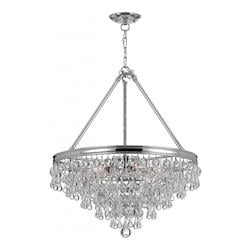How to Choose the Right Lighting for Your Room
Adequate lighting in a room makes all the difference. Any good decorator knows to value and respect the necessity of good lighting in room decoration. There are different types of lightings to choose from, and they can be combined for the absolute wow factor. You can go for something like dim lights, bright lights, hanging lights, RGB lights, wall lights, LED lights, or even chandelier lights. The idea is to choose lights that are practical, functional, and beautiful at the same time. Having the right amount of illumination is necessary. You don’t want harsh light in your room, and neither do you want too dimmed ones.
Typically, people who are into more advanced room lighting know their stuff and have particular things in mind. If you are new to this, you can take one of the possible steps, like visiting a showroom nearby. A lighting showrooms near you will provide you with some basics of lighting for your room. It is for a basic lighting or an exquisite lighting setup.
Since a lot of effort and time goes into selecting the lighting that is adequate for your house and your room, we have decided to make a guide on the fundamentals of lighting rooms beautifully. Do note that streamers who like to stream online would usually have a different lighting set, which is not included in this article.
Learning the Basics
- Your feel of a physical space is heavily affected by lighting.
- Be mindful of artificial and natural light.
- Harsher light isn’t better; neither is more luminance. You want quality over quantity.
- The light level should mostly match with the practical aspects of the room. What purpose does the room serve? Which location will be utilized more, and for what? Will a lamp help?
- Only put light where it’s required. You want close to dim ambient light everywhere else and brighter light and specific room locations, especially when the room is big.
Types of Lightings
There are mainly three types of lightings that see common use to light a room.
- The Ambient Lighting
- Task Lighting
- Accent Lighting
In most cases, you will find 2 of these in rooms with good lighting. Rarely, you will find all three lighting types in a single place, and it’s pretty hard to get it right. Each lighting listed has a particular use case.
Ambient Lighting
The ambient lighting is basically the primary source of the illumination of the room. These are usually roof fixtures and other forms of lighting. A contractor decides the illumination or the necessary amount of ambient lighting that is required in a room. A contractor will measure the required lighting using foot-candles. Not all rooms require the same amount of ambient light. Places like the kitchen, for example, need much brighter light than the bedroom or the living room.
Task Lighting
These kinds of lighting are task-specific, as the name suggests. These lightings can be used on top of dim ambient light to provide luminance for various activities like reading a book or doing makeup. Task lightings light a specific portion of a room and are never used to light a full room on its own. Task lightings are also the most versatile coming in various forms, sizes, and shapes. You can find wall-mounted ones, desk sit-on, mirror implanted ones, and the list just goes on. Many of the task lightings get very fancy with rotating features and angle customization for convenience.
Accent Lighting
This is something that people with attention to detail would use. It is the most decorative lighting in a room and the most creative way to implant lighting. It is used to draw attention to the various quirks of the place. If you have a painting that you want to highlight or a bookshelf, a fireplace perhaps, a collection of some kind or literally anything you fancy. These lights work simply like a highlighting feature inside a room. While accent lights can be simple and elegant, they can also be very complex, creative, and aggressive.
Note: The better room lightings usually start with an accent and task light, not even requiring the ambient light (in most cases, these are the ceiling lights or tube lights). When you are planning out lighting inside a room, first make a note of where the tasks will happen and make a mind map of lights and their intensity. Choose the accent lights first and then add task lights. You can add the ambient light at last, and in some cases, you might not even need it. Mixing the three kinds of lightings will surely provide an outstanding result if the planning is done correctly.
The Types of Bulbs
Much like accent lighting, bulbs come in a wide range of diversity and can sometimes be used as both accent lighting and task lighting. Knowing what kind of bulbs to use for the look, you are going for will up your game even higher. Bulbs can also save energy costs, given the viability of power-saving bulbs available in the market these days.
In any case, let’s discuss the most common bulbs that you will find and how each of them differs from one another.
Incandescent Lights
These are the least energy-efficient and provide warm light conditions somewhat similar to the sun. These lights are not used as much these days as the older days. The industry is starting to move away from these shifting to better alternatives.
LED Lights
One of the more expensive options. It lasts much longer and has exceptional energy-saving capabilities. This is one of the most modern options, and the industry is pushing it further each year with more creative designs and whatnot.
Fluorescent Lights: These are also pretty energy efficient but lack somewhat in the quality department when it comes to rendering or providing a more relaxed ambiance. They usually have a delay after you press the switch and can be dimmed somewhat but not too much of an extent. These are better for garages or hallways, places that aren’t as important compared to others.




